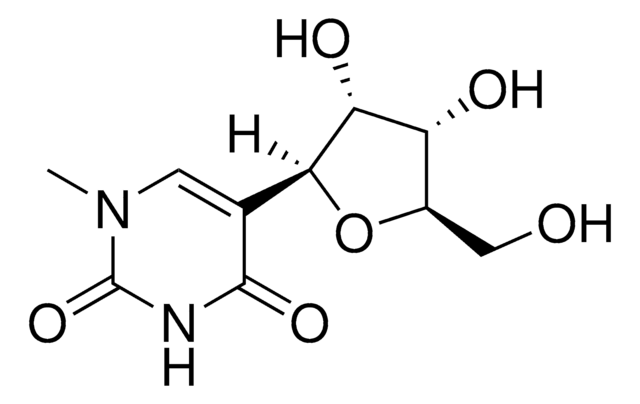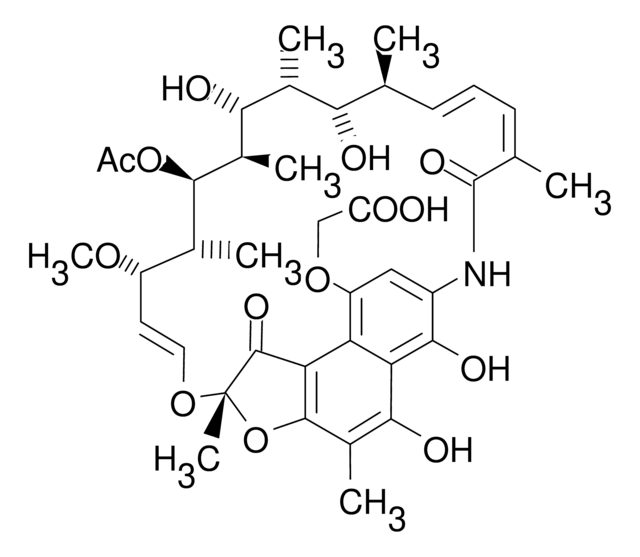SMB00912
Pseudouridine
≥98% (HPLC)
Synonyme(s) :
Pseudouridine, β-Pseudouridine, ψ-Uridine, 5-(β-D-Ribofuranosyl)uracil
About This Item
Produits recommandés
Source biologique
synthetic (chemical)
Niveau de qualité
Pureté
≥98% (HPLC)
Forme
powder
Poids mol.
244.2
Couleur
white to off-white
Pf
222 °C ((432 °F ))
Solubilité
water: soluble
Température de stockage
2-8°C
InChI
1S/C9H12N2O6/c12-2-4-5(13)6(14)7(17-4)3-1-10-9(16)11-8(3)15/h1,4-7,12-14H,2H2,(H2,10,11,15,16)/t4-,5-,6-,7+/m1/s1
Clé InChI
PTJWIQPHWPFNBW-GBNDHIKLSA-N
Catégories apparentées
Description générale
Application
Caractéristiques et avantages
- High-purity compound suitable for a wide variety of research applications
Autres remarques
Code de la classe de stockage
13 - Non Combustible Solids
Classe de danger pour l'eau (WGK)
WGK 3
Point d'éclair (°F)
Not applicable
Point d'éclair (°C)
Not applicable
Certificats d'analyse (COA)
Recherchez un Certificats d'analyse (COA) en saisissant le numéro de lot du produit. Les numéros de lot figurent sur l'étiquette du produit après les mots "Lot" ou "Batch".
Déjà en possession de ce produit ?
Retrouvez la documentation relative aux produits que vous avez récemment achetés dans la Bibliothèque de documents.
Notre équipe de scientifiques dispose d'une expérience dans tous les secteurs de la recherche, notamment en sciences de la vie, science des matériaux, synthèse chimique, chromatographie, analyse et dans de nombreux autres domaines..
Contacter notre Service technique







